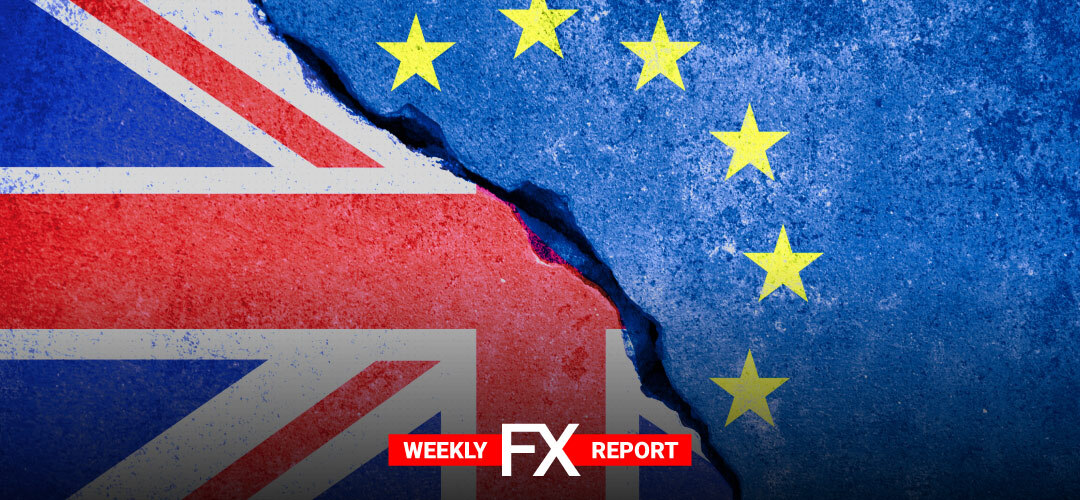Markets turn more optimistic about Brexit negotiations ahead of a key EU leaders summit this week as there are signs a core deal is taking shape.
Both sides have said it is still possible that a deal will be reached before the UK’s status-quo transition period. The UK had previously set Oct. 15 as a deadline by which a post-Brexit EU trade deal needed to be reached. Is the endgame really in sight?
EU leaders will insist on tough enforcement rules for any trade deal with Britain. Further, negotiators warn of a huge amount of textual work even if a deal is struck. Another report suggests the EU is preparing for negotiations to last until mid-November. Several sticking points remain. The EU’s chief negotiator wants more concessions from Britain before entering the last phase of intense negotiations.
The EU’s Oct. 15-16 summit will evaluate the progress. Even if a deal is struck, the ebb and flow of Britain’s new relationship with the EU may continue to hold markets hostage.
Coronavirus aid discussions in the United States have stalled. The Trump administration on Sunday called on Congress to pass a limited coronavirus relief bill instead of a broader package.
The economy struggles to recover from coronavirus-related shutdowns that threw millions of Americans out of work. After U.S. Q2 results beat expectations, Q3 will show whether dire forecasts for companies’ bottom lines were justified.
Expectations that Biden will win the Nov. 3 election and that Democrats could win the Senate rise. A Democratic victory would likely result in a larger stimulus to mitigate the economic fallout from COVID-19.
In Europe, the World Health Organization has urged governments to restrict activity to combat a rapid rise in COVID-19 infections.
Further, investors bet on a steady recovery for China, the world’s no. 2 economy.
START TRADINGFocus on employment reports, inflation releases
Focus this week will also be on the third-quarter earnings scorecard for corporate America.
- Investors now look to German Final CPI and UK Employment Report on Tuesday (13.10). The German Final CPI August reading came in at -0.1%. Analysts expect another decline for September, with an estimate of -0.2%.
- The ADP Research Institute’s Canada Non-Farm Employment Change is due on Wednesday (14.10).
- The Australian Employment Report follows on Thursday (15.10). The economy created 111.0 thousand jobs in August. The forecast for September stands at -35.0 thousand, with the unemployment rate projected to rise to 7.1% up from 6.8%.
- Traders will be looking for the Eurozone Inflation Report on Friday (16.10). Deflation remains a major concern for ECB policymakers. Inflation declined by 0.2% in August and the markets are braced for a -0.3% reading in September.
Follow this week’s economic calendar.
LQDFXperts – Key EU leaders summit to assess Brexit progress
Investors remain hopeful about a deal in Washington over more fiscal stimulus.
EUR/USD continues to rally, as the pair recorded gains of 1.0% last week. The US dollar had another rough week against the G-10 currencies. It was the second week of losses for the greenback as investors increased bets that Joe Biden would win the U.S. presidential election on Nov. 3 and offer fiscal stimulus afterwards.
GBP/USD posted strong gains last week, climbing 0.8%. The pound has been volatile on contradictory headlines about how much progress has been made in Brexit negotiations. The British currency had a second consecutive week of gains, up 0.4% on a weekly basis. The UK economy expanded by 2.1% in August, missing the estimate of 4.6%.
USD/JPY showed limited movement for a second straight week. In Japan, consumer indicators continued to point downwards. With investors continuing to show an appetite for risk, the US dollar and Japanese yen, both of which are safe-haven assets, may face pressure this week.
AUD/USD posted a strong gain for a second straight week. The pair gained 1.0% last week and punched above the 0.72 level. The Reserve Bank of Australia maintained rates at 0.25%, where they have been pegged since Mach. However, the bank hinted broadly that it would cut rates at the November meeting. With the RBA likely to lower rates before the end of the year, sentiment towards the Aussie could weaken.
USD/CAD dropped 1.43% last week, its worst week since June. The US dollar continues to struggle and the Canadian dollar took full advantage last week. With Covid-19 continuing to hamper economic activity, risk sentiment could weaken, which would be bearish for the Canadian dollar.
PLEASE NOTE The information above is not investment advice.
Sources: Reuters, CNBC, BBC, The Guardian
